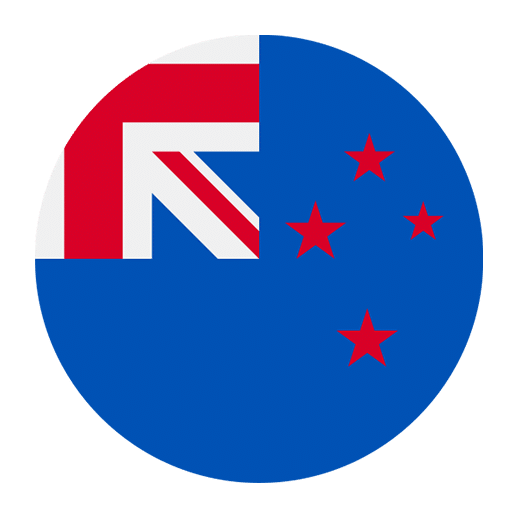Loanwords, or borrowed words, are a fascinating aspect of any language. They provide a window into historical interactions, cultural exchanges, and societal changes. In the case of the Māori language, the indigenous language of the Māori people of New Zealand, loanwords tell a compelling story of contact, adaptation, and cultural assimilation. This article delves into the origins, nature, and impact of loanwords in Māori, providing language learners with a deeper understanding of how these borrowed terms have shaped and enriched the language.
The Māori language, or te reo Māori, is a member of the Polynesian language family and is closely related to other Polynesian languages such as Hawaiian, Tahitian, and Samoan. For centuries, Māori was the dominant language spoken throughout New Zealand. However, with the arrival of European settlers in the 19th century, the Māori language encountered English, leading to significant linguistic influences and the incorporation of numerous loanwords.
Historical Context of Loanwords in Māori
The history of loanwords in Māori can be traced back to various periods of contact with different cultures and languages. The most significant influence, however, has been English. During the early 19th century, European explorers, missionaries, traders, and settlers began arriving in New Zealand, bringing with them their language and culture. This contact led to the introduction of many new concepts, technologies, and social structures that were previously unknown to the Māori people.
The adoption of English loanwords into Māori was not a passive process. Rather, it was an active and adaptive response to new cultural and linguistic realities. The Māori people selectively borrowed and adapted terms that were relevant to their needs and experiences, often modifying them to fit the phonological and grammatical rules of their own language.
Categories of Loanwords in Māori
Loanwords in Māori can be broadly categorized into several groups based on their origins and the contexts in which they were adopted. These categories provide insights into the types of interactions and exchanges that occurred between Māori and other cultures.
1. Technological and Scientific Terms
With the arrival of Europeans came new technologies and scientific knowledge that were previously unknown to the Māori. As a result, many loanwords in this category pertain to tools, machinery, and scientific concepts. For example:
– “Mīhini” (machine) from the English “machine”
– “Rorohiko” (computer) from “roro” (brain) and “hiko” (electricity), influenced by the English term “computer”
– “Hāte” (shirt) from the English “shirt”
These loanwords were often adapted to fit the phonological structure of Māori, making them easier to pronounce and integrate into the language.
2. Social and Cultural Terms
The introduction of European social structures, institutions, and cultural practices also led to the borrowing of related terms. Examples include:
– “Kāwana” (governor) from the English “governor”
– “Kāreti” (college) from the English “college”
– “Tākuta” (doctor) from the English “doctor”
These loanwords reflect the incorporation of new social roles, educational institutions, and healthcare practices into Māori society.
3. Religious and Spiritual Terms
Missionaries played a significant role in the early contact between Māori and Europeans, leading to the introduction of Christian religious concepts and terminology. Examples include:
– “Atua” (god) from the English “god,” although “atua” also existed in pre-contact Māori with a broader meaning referring to spirits or gods
– “Hāhi” (church or religion) from the English “church”
– “Inoi” (pray) from the English “pray”
These loanwords facilitated the spread of Christianity among the Māori people and the integration of new religious practices into their spiritual life.
4. Everyday Vocabulary
Many loanwords were adopted to describe everyday objects, foods, and activities introduced by Europeans. Examples include:
– “Tī” (tea) from the English “tea”
– “Pāka” (park) from the English “park”
– “Pēke” (bag) from the English “bag”
These terms reflect the practical and immediate needs of the Māori people as they encountered new objects and activities in their daily lives.
Phonological Adaptation of Loanwords
One of the most interesting aspects of loanwords in Māori is how they have been adapted to fit the phonological rules of the language. Māori has a relatively simple phonological system compared to English, with a smaller inventory of consonants and vowels. As a result, loanwords often undergo significant modification to conform to Māori phonotactics.
Consonant Adaptations
Māori has only ten consonant phonemes: /p, t, k, m, n, ŋ, r, w, h, f/. When borrowing words from English, which has a much larger set of consonants, Māori speakers often substitute the closest available sound. For example:
– The English /s/ sound is often replaced with /h/, as in “hāte” (shirt).
– The English /l/ sound is replaced with /r/, as in “rāranga” (to weave) from “lullaby.”
Vowel Adaptations
Māori has five vowel phonemes: /a, e, i, o, u/. English loanwords are adapted to fit this vowel system, often resulting in vowel changes or the addition of vowels to break up consonant clusters that are not allowed in Māori. For example:
– The English word “school” becomes “kura,” with the addition of a vowel to break up the initial consonant cluster.
– The English word “bus” becomes “pahi,” with a vowel change to fit Māori phonotactics.
These phonological adaptations make loanwords more natural and easier to pronounce for Māori speakers, ensuring their smooth integration into the language.
Grammatical Integration of Loanwords
In addition to phonological adaptations, loanwords in Māori also undergo grammatical integration to fit the syntactic and morphological rules of the language. This process involves adapting the borrowed terms to conform to Māori word classes, verb conjugations, and sentence structures.
Noun Integration
Loanwords that are nouns are often incorporated into Māori noun phrases and can take Māori possessive and plural markers. For example:
– “Tākuta” (doctor) can become “tāku tākuta” (my doctor) or “ngā tākuta” (the doctors) using Māori possessive and plural markers.
Verb Integration
Loanwords that are verbs are adapted to fit Māori verb conjugation patterns and can take Māori tense markers and pronouns. For example:
– The borrowed verb “pānui” (to read, from English “to read”) can be conjugated as “kei te pānui au” (I am reading) using Māori tense markers and pronouns.
These grammatical adaptations ensure that loanwords function seamlessly within the Māori language, maintaining the integrity of its grammatical structure.
Cultural Impact of Loanwords
The incorporation of loanwords into Māori is not just a linguistic phenomenon; it also reflects broader cultural changes and exchanges. Loanwords provide insights into how the Māori people have navigated and adapted to new cultural realities, integrating foreign concepts while maintaining their linguistic and cultural identity.
Preservation and Revitalization of Māori
The adoption of loanwords has played a role in the preservation and revitalization of the Māori language. By incorporating terms for new technologies, social roles, and cultural practices, Māori speakers have ensured that their language remains relevant and adaptable in a rapidly changing world. This adaptability has been crucial in efforts to revitalize and promote te reo Māori, making it a living and evolving language that can meet the needs of contemporary speakers.
Balancing Tradition and Modernity
Loanwords also highlight the balance between tradition and modernity in Māori culture. While the language has borrowed and adapted many foreign terms, it has done so in a way that respects and preserves its traditional phonological and grammatical structures. This balance allows Māori speakers to engage with modern concepts and technologies while maintaining a strong connection to their linguistic and cultural heritage.
Cultural Exchange and Identity
The presence of loanwords in Māori reflects the broader dynamics of cultural exchange and identity. The Māori people have a long history of interaction with other cultures, from early Polynesian navigation to European colonization and beyond. Loanwords serve as linguistic markers of these interactions, embodying the exchange of ideas, technologies, and practices. They also highlight the resilience and adaptability of Māori culture, which has incorporated foreign influences while maintaining its unique identity.
Challenges and Controversies
While loanwords have enriched the Māori language, their adoption has not been without challenges and controversies. Some language purists argue that the incorporation of too many foreign terms can dilute the traditional vocabulary and phonology of Māori, potentially leading to language change or loss. This concern is particularly relevant in the context of language revitalization efforts, where the focus is often on preserving and promoting traditional Māori language and culture.
To address these challenges, language planners and educators have sought to strike a balance between incorporating useful loanwords and promoting traditional vocabulary. Efforts to coin new Māori terms for modern concepts, rather than relying solely on loanwords, have been part of this strategy. For example, the term “rorohiko” (computer) was coined using traditional Māori words rather than borrowing directly from English.
Conclusion
Loanwords in Māori provide a fascinating lens through which to explore the language’s history, adaptation, and cultural interactions. From technological and scientific terms to social and cultural vocabulary, these borrowed words reflect the dynamic and evolving nature of te reo Māori. By understanding the origins, phonological adaptations, and grammatical integration of loanwords, language learners can gain a deeper appreciation for the richness and complexity of Māori.
As the Māori language continues to evolve and adapt in the modern world, the careful and thoughtful incorporation of loanwords will remain an important aspect of its development. By balancing the need for new terminology with the preservation of traditional linguistic structures, Māori speakers and language advocates can ensure that te reo Māori remains a vibrant and living language for future generations.

